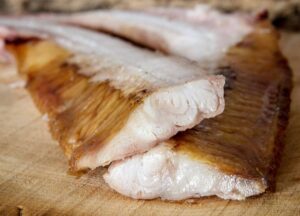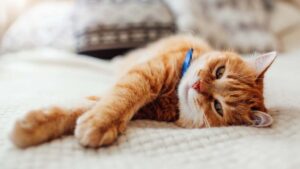How to Stop Your Cat from Scratching the Floor After Eating
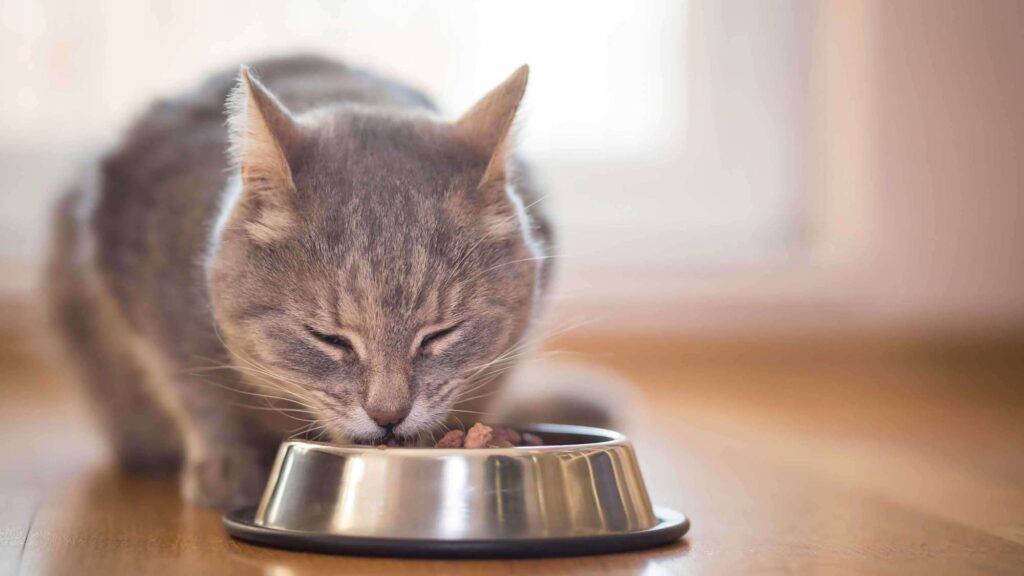
Cats by nature, have a natural instinct to scratch. They use scratching as a way to mark their territory, keep their claws sharp, and stretch their muscles. While this behavior may not be harmful, you can still address it and stop it. In this article, we’ll discuss the reasons for this behavior and how you can stop your cat from scratching the floor after eating.
- Why Do Cats Scratch the Floor After Eating?
- How to Stop Your Cat from Scratching the Floor After Eating
- 1. Experiment to find a brand of food that your cat loves
- 2. Offer smaller, more frequent meals
- 3. Remove your cat's food dish after they finish eating
- 4. Provide a Designated Scratching Area
- 5. Manage Stress and Anxiety
- 6. Remove food bowl after mealtime
- 7. Provide access to clean water
- 8. Distract with playtime
- 9. Serve on suitable surfaces
- 10. Consider puzzle feeders
- Summary
Why Do Cats Scratch the Floor After Eating?
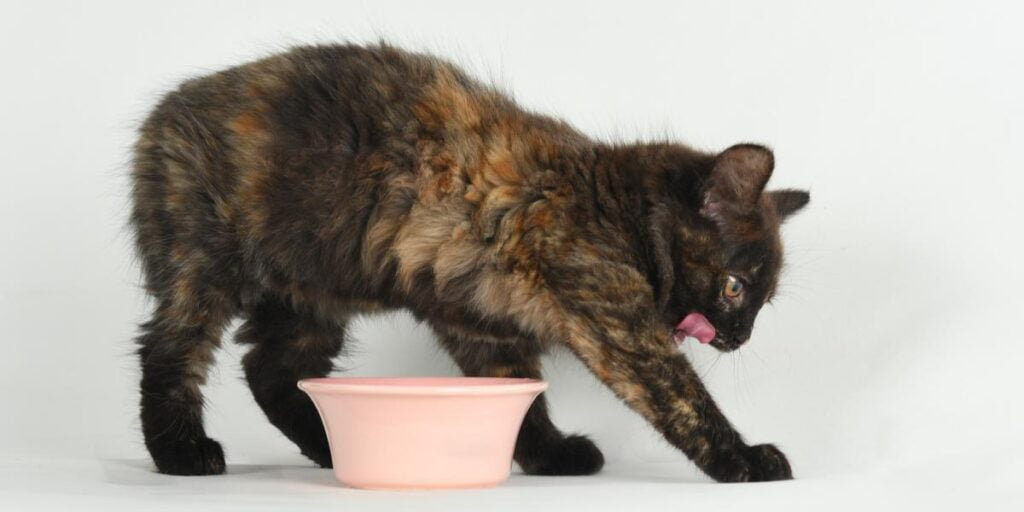
Before we discuss how to stop your cat from scratching the floor after eating, it’s important to understand why this behavior is occurring. There are several possible reasons why cats may scratch the floor after eating a meal.
Reason 1- Cats instinctively bury their food and feces to protect themselves and their food from predators. This behavior is known as “food caching” and is practiced in the wild by big cats, like leopards, and even North American bobcats.
Reason 2- Domestic cats also exhibit this behavior by scratching and burying their food or other items they dislike, much like burying feces in a litter box. This act of burying allows the cat to “disappear” by getting rid of its waste, and can also help to tidy a cat’s personal space as they often sleep where they eat.
Reason 3- In addition, kneading the floor near their food bowl is a sign of contentment and pleasure, as cats knead to show anticipation of a pleasant experience. The behavior of scratching the floor around their food bowl is rooted in a cat’s instincts to protect themselves and their food from predators. Whether they are trying to bury leftover food, stash it for later, or get rid of food they don’t like, this behavior is natural and instinctual to cats.
How to Stop Your Cat from Scratching the Floor After Eating
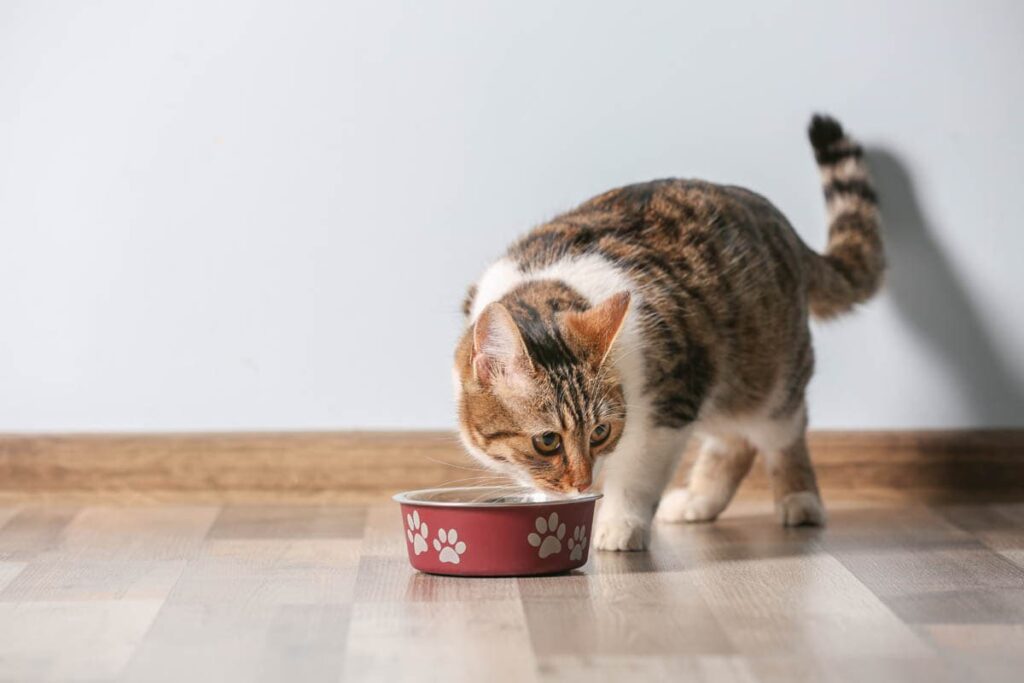
Once you have determined the reason behind your cat’s scratching behavior, you can take steps to stop it. Here are some tips to help you stop your cat from scratching the floor after eating:
1. Experiment to find a brand of food that your cat loves
- Try offering different food options with varying flavors, textures, and brands to your cat
- Observe your cat’s reaction and interest in each food option
- Gradually introduce new food options over a period of time to prevent digestive upset
- Keep note of the food that your cat seems to enjoy the most and stick to it as their regular food.
2. Offer smaller, more frequent meals
- Divide the cat’s daily food intake into smaller portions.
- Offer these portions to the cat at regular intervals throughout the day.
- This will prevent leftover food and keep the food fresh and appealing to your cat.
3. Remove your cat’s food dish after they finish eating
- After your cat has finished eating, promptly remove the food dish.
- This will eliminate the opportunity for your cat to bury any remaining food.
- To further prevent scratching behavior, try engaging your cat in playtime or rewarding them with treats immediately after their meal.
4. Provide a Designated Scratching Area
- Give your cat a specific area to scratch, such as a scratching post or pad.
- Encourage your cat to use this area by offering treats or praise whenever the successfully use it after a meal.
- Provide multiple scratching options in different locations throughout your home.
5. Manage Stress and Anxiety
- Identify and address any sources of stress or anxiety in your cat’s environment.
- Provide opportunities for your cat to exercise and play.
- Consider consulting a veterinarian or a certified animal behaviorist if needed.
6. Remove food bowl after mealtime
- It is important to take away the food bowl once your cat has finished eating to avoid any further scratching behavior.
- If you have served wet food, make sure to clean the bowl immediately as it can spoil quickly.
7. Provide access to clean water
- Ensure that your cat has access to clean water at all times to maintain proper hydration levels.
- Providing access to water can also reduce scratching behavior around the area.
8. Distract with playtime
- If you notice your cat scratching around the area after a meal, try to distract them with a cat toy and engage in playtime.
9. Serve on suitable surfaces
- Avoid leaving dry food for your cat to graze on, as this can lead to scratching behavior as they bury leftover food.
- Serve food on surfaces that are not easily scratched or damaged by your cat’s claws.
- Consider investing in a feeding mat that goes underneath your cat’s bowl.
10. Consider puzzle feeders
- If you prefer free feeding or do not want to serve food all the time, consider purchasing a puzzle or interactive feeder for your cat.
- Puzzle feeders can provide a fun and interactive way for your cat to “hunt” for their meal, reducing scratching behavior.
Summary
In conclusion, to stop your cat from scratching the floor after eating requires a combination of managing their feeding routine, providing proper stimulation, and redirecting their attention. By limiting portion sizes, serving food on non-damaging surfaces, and removing the bowl after eating, you can help reduce scratching behavior.
Distracting your cat with toys and playtime or using a puzzle feeder can also be effective in diverting their attention away from scratching. Keeping your cat’s claws trimmed can also reduce damage to your home. Overall, by understanding your cat’s natural instincts and providing appropriate outlets for their behaviors, you can help prevent scratching behavior after meals.

